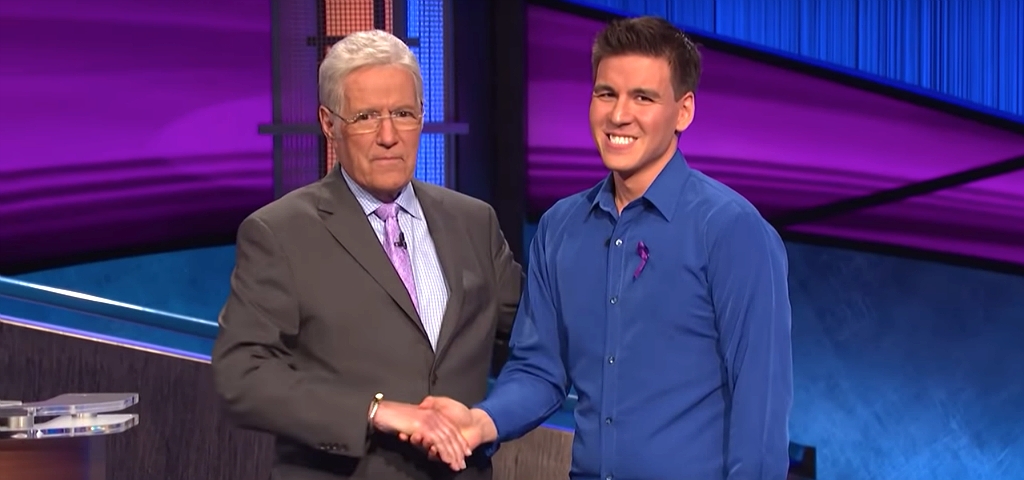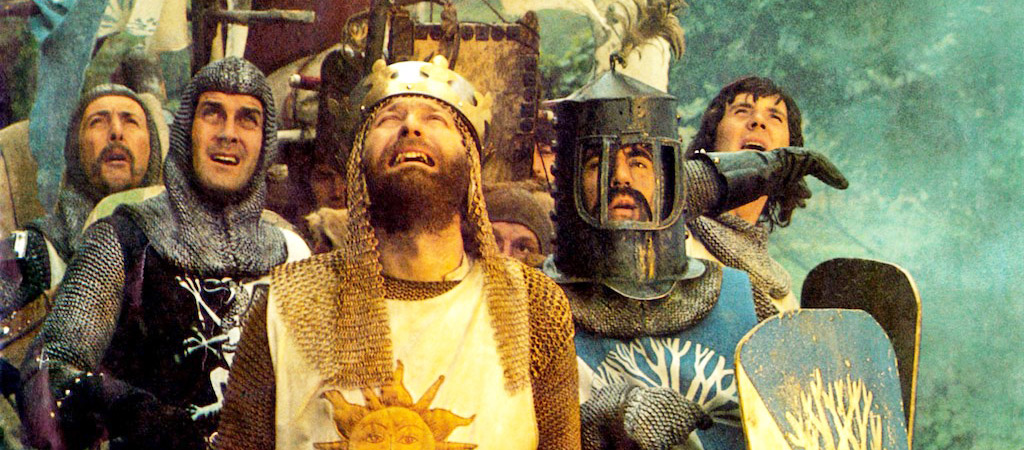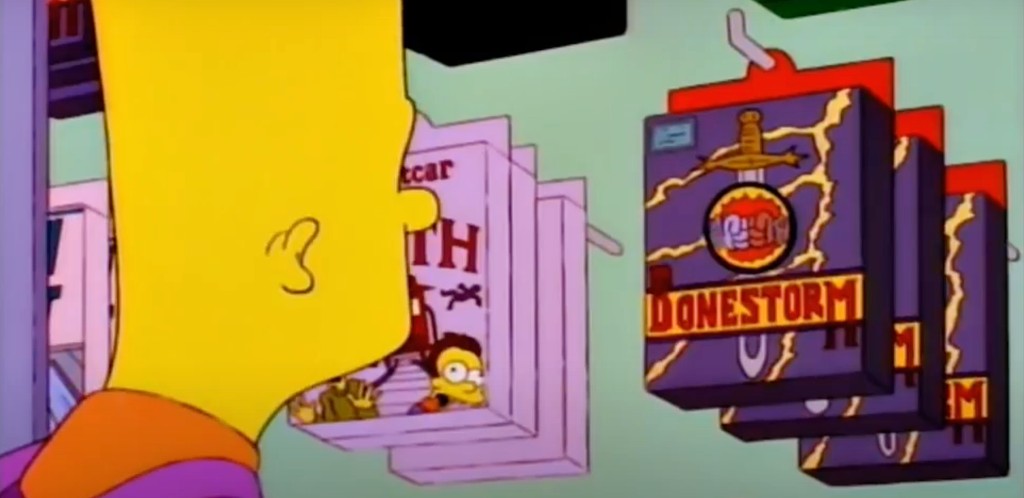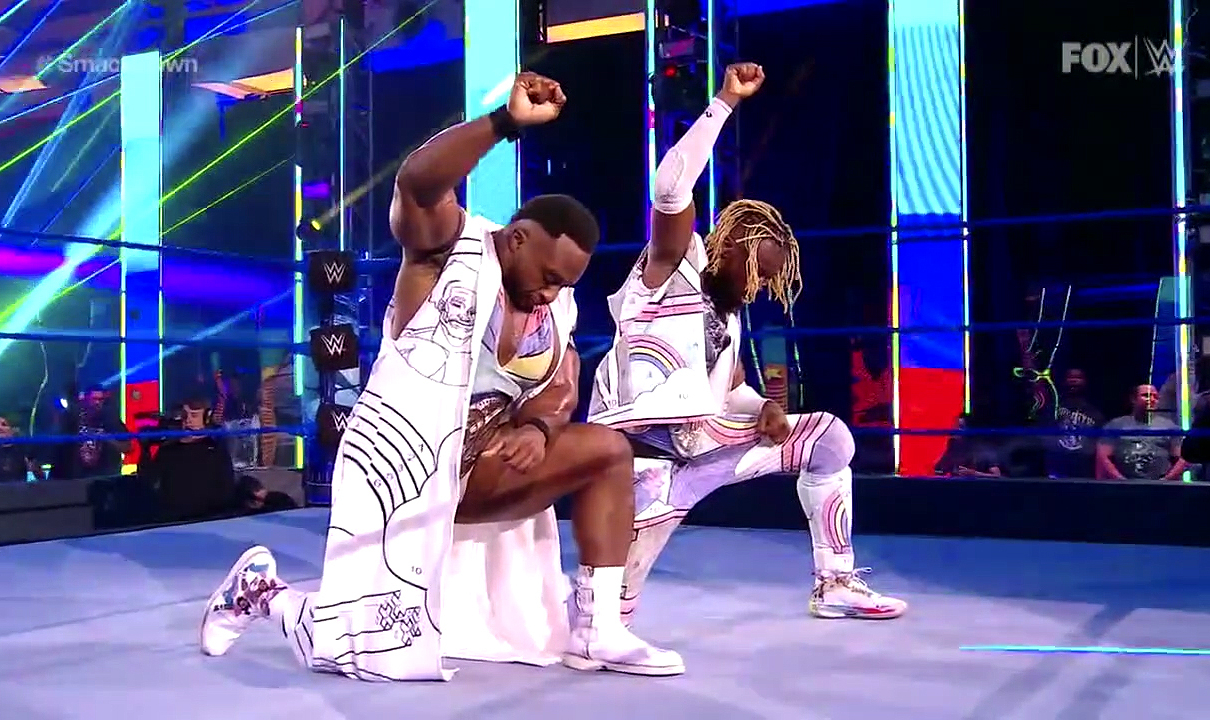“The employee utilized oleoresin capsicum spray, or pepper spray, in response to an assaultive individual.”


Jeopardy! is officially out of new pre-COVID-19 shutdown episodes to air, but the legendary game show has some fun reminders of its immediate past in the reruns it will air until filming can resume.
Jeopardy! had its final new episode air on Friday, and though the show’s Twitter account has stayed strangely silent —as of this writing it hasn’t posted once the entire month of June, in fact — reports indicate the game show has a plan for what it will air during weeks that usually see new episodes on weekday evenings.
E! News reported on Thursday that the show plans to air episodes involving both James Holzhauer and Emma Boettcher, the former of whom went on an epic Jeopardy! run in 2019 before being dethroned by the latter. Those episodes will lead up to a re-airing of another special event: the 2019 Tournament of Champions in which Holzhauer (spoilers!) was able to exact his revenge and beat Boettcher in the finals to win another $250,000 last November.
Starting June 15, Jeopardy! will showcase big champions and big wins leading up to the encore presentation of the 2019 Tournament of Champions starting July 6.
James Holzhauer and Emma Boettcher are among the spotlighted contestants.
“For the first time, we have a chance to shine a light on each individual player before we revisit a big tournament,” Jeopardy! executive producer Mike Richards said in a statement. “Some of these contestants played quite a while ago, so we hope that highlighting their biggest games will provide a deeper understanding of their specific strengths and how they earned their places in the Tournament of Champions.”
It certainly makes sense to highlight some past big winners instead of just running a normal season’s reruns, especially given the outstanding play from Holzhauer and Boettcher that got the show so much attention over the last year. Jeopardy! had already stretched its syndication schedule a bit by re-airing episodes involving Ken Jennings, as well as the Greatest of All Time Tournament from earlier in 2020 that aired in primetime and featured Jennings, Holzhauer, and Brad Rutter.
Those episodes were sprinkled in amid some extra features about the contestants, which seems to be what the plan is for these other re-runs as well. It’s no substitute for new episodes and more chances for Alex Trebek to poke fun at new contestants, but it’s far better than nothing. Perhaps the episodes will give viewers another chance to appreciate Boettcher’s play and stop trading in conspiracy theories about how Holzhauer’s run originally came to an end once they see it again for themselves.
[via E! Online]

While protests regarding police brutality against Black people have continued in cities across the country, Seattle’s “Capital Hill Autonomous Zone” has gotten the brunt of the attention from much of the media in recent days, especially on Fox News. But it appears that Fox isn’t aware of the work of John Cleese and Co., and it accidentally let a clear reference to one of the Monty Python movies on air as fact when reporting about the area in Seattle where protesters have been free to assemble for the last few days.
Josh Billinson pointed out on Saturday that the Reddit post shown on the conservative network was actually a nearly word-for-word parody of Monty Python and the Holy Grail.
Fox News fell for a Monty Python joke on Reddit lmao pic.twitter.com/Yo34yuQvlD
— Josh Billinson (@jbillinson) June 13, 2020
Billinson later provided the video of the report, which took the poster and their apparent frustrations with the protests and its leadership very seriously.
Here’s the clip: pic.twitter.com/r88YTqjOJP
— Josh Billinson (@jbillinson) June 13, 2020
But as Billinson pointed out, the lines are actually from Monty Python and the Holy Grail, specifically a scene where the king tries to get information about who lives in a castle and is thoroughly turned around by mere commoners.
The scene is classic Monty Python, creating a conflict out of a simple misunderstanding and turning it into a commentary on the entire political structure of medieval Europe. And the language in the Reddit post is identical to the scene, which almost certainly means it was a joke and not an actual social uprising within a social uprising. All that’s missing is King Arthur’s shouts for the commoners to be quiet.
It wasn’t the only moment for which Fox News has drawn scrutiny in its coverage of the Autonomous Zone, either. The New York Times reported that the network officially apologized for using digitally-altered images of Seattle in its broadcasts, including one that was of an entirely different city.
On Friday, Fox posted on its site a photo of a man armed with a rifle standing in front of the shattered glass of a storefront. The Seattle Times noted that it was a combination of several different photos from Getty Images taken over nearly two weeks.
Also on the website, Fox also posted a nighttime photo of a burning storefront and car, accompanied by the headline “Crazy Town” and a list of articles on the unrest in Seattle. But that image was taken in St. Paul, Minn.
Fox removed both images after inquiries from The Seattle Times.
It’s unclear if Fox News will cover further developments of the upheaval in centuries-old fictional Europe, but hopefully they’ll avoid rabbits as they get to the bottom of the matter.

If you’ve always wanted to putt with the best of them, there’s officially a video game from The Simpsons universe that you need to try out. You probably already know that Itch.io is one of the best places to find some truly inspired indie games, and this Simpsons-inspired golf game is up there with one of the best discoveries on the site we’ve seen.
The game got plenty of attention when former Simpsons showrunner Bill Oakley tweeted about it on Saturday.
All Simpsons fans must check out this fantastic PLAYABLE VERSION of Lee Carvallo’s Putting Challenge by @AaronDemeter https://t.co/QfLLFwN51N
— BILL OAKLEY (@thatbilloakley) June 13, 2020
The game — Lee Carvallo’s Putting Challenge — comes from an episode entitled “Marge Be Not Proud,” the eleventh episode of the show from Season 7. In it, Bart really wants a violent video game called Bonestorm, and even tries to steal it from a big box store.
He gets caught, though, and Marge acts coldly toward him the rest of the episode as Bart attempts to regain her love. The episode ends with Bart getting his mother a picture of himself for Christmas, and Marge revealing that she did buy him a game: just not quite the one he wanted.
That game, of course, is Lee Carvallo’s Putting Challenge. And while it’s a bit underwhelming, seeing it faithfully recreated online is a true joy. Check out this hot putting action.

Who needs Bonestorm or Bloodstorm or Bonesquad or any other game when you can putt with your 3 wood? The game actually works, so if you remember the episode at all it’s a nice little distraction and a jolt of nostalgia, to say the least.

Previously on the Best and Worst of Friday Night Smackdown: Miz and Morrison spent the day pranking Braun Strowman and accidentally slimed Kayla Braxton, while the very tasteful story of Sheamus calling Jeff Hardy “a junkie” continued.
Things to do: Follow us on Twitter and like us on Facebook. You can also follow me on Twitter. BUY THE SHIRT.
One more thing: Hit those share buttons! Spread the word about the column on Facebook, Twitter and whatever else you use. Be sure to leave us a comment in our comment section below as well. I know we always ask this, and that this part is copy and pasted in every week, but we appreciate it every week.
Here’s the Best and Worst of WWE Friday Night Smackdown for June 12, 2020.
Worst: Who Are You And What Have You Done With Brandon?!?
Hi, everybody! Scott Heisel here. You might recognize my byline around these parts, especially if you enjoy me recapping an old cowboy refusing to ride off into the sunset. Brandon is taking a much-deserved weekend off from challengers pinning champions in non-title matches (not that this scenario would ever happen, but just as a hypothetical).
Worst: Urine Trouble
Okay, so let’s just get the worst part of the episode out of the way immediately, the same way Smackdown had this segment open the show. The Jeff Hardy, Potentially Relapsing Addict angle is pretty gross no matter how much they try to play his real-life addictions for sympathy (and it is worth noting that having Hardy on TV admitting he’s an alcoholic who attends weekly AA meetings is powerful), and this segment does nothing to change it. Sheamus and Hardy are scheduled to have a contract signing — when was the last time a match not for a championship had a contract signing, anyway? — but Sheamus (who brings out security guards for some reason, though it’s never quite explained why) refuses to sign anything until he makes Hardy take a piss test on national TV. Even if you missed the spoilers earlier in the week, it goes exactly the way you’d expect it. with Hardy throwing what looked to be a solid pint of piss at the Celtic Warrior, after having his epic burn of “It’s better to be pissed off than be pissed on” muted by FOX censors (and the whole incident cut from the west coast feed entirely). WWE continues to find ways to trip over their own feet with FOX, who has to be wondering if there’s any sort of out clause in their $1 billion, 5-year TV deal. But hey, at least an old billionaire got to chuckle at someone becoming the cover boy for next month’s issue of Piss Drinkers. Wrestling!
Best: Black Lives Matter

Infinite praise goes to Big E and Kofi Kingston for using their platform on primetime TV to speak out on behalf of Breonna Taylor, Tamla Horsford and Shukri Abdi. Who would’ve thought the New Day would eventually circle back around to its Nation Of Domination roots?
Worst: Cesaro And Shinsuke Nakamura Have Pinned The Smackdown Tag Team Champions!
You’ve got to think that puts them into contention for a future title shot!
Best: Professional By God Wrestling
The big hook of this episode was the Intercontinental Championship finals between Daniel Bryan and AJ Styles. While early word from inside the PC said this match, taped weeks ago, was top notch, there was still a huge part of me that expected a schmozz finish — maybe with Sami Zayn returning — to force a redo at Backlash this Sunday. But WWE, to their credit (just this one time), actually stuck to their word and let two of the best professional wrestlers in the world (which is round, btw) have an absolutely outstanding professional wrestling match that took up nearly 45 minutes of TV time.
The ensuing contest is without a doubt one of the best on WWE TV in 2020 thus far, and for sure the best thing that’s been on Friday nights in a long while. Bryan and Styles put on a goddamn clinic for an audience who will actually benefit the most from watching it up close — PC trainees and NXT wrestlers. Even though there were a slew of commercial breaks throughout (and what do you wanna bet DBry and AJ actually continued to wrestle through those breaks as to not break their pacing?), the match continued to build tension throughout, with the little things really shining through.
For example, early on Bryan sells his left arm, which stops him from applying the surfboard to Styles. He then tries to turn it into an inverted surfboard, but gets his shoulders down in the process, making Charles Robinson start counting to three and meaning he has to release the submission.
Later on in the match, after Styles has been softening up Bryan’s left knee for some time, Bryan is in position for his Yes Kicks, but there’s a brief moment where he pauses ever so slightly during his windup to sell the knee. It’s beautiful, and it’s stuff like this (and his secretly sadistic streak that reminds me he might be a face but he’ll never be a goody two shoes) that is a stark reminder why Bryan is still one of top talents in the industry — and the final sequence, where Styles catches Bryan mid-Knee Plus and hits a Styles Clash, followed by a Phenomenal Forearm for the win, was just stunning, and is a reminder that Styles, when paired with the right talent, is just as good. Maybe they’ll just re-air this during Backlash instead of Edge/Orton. Y’know, card subject to change and all that.
Best: The WWE Prom-formance Center
Pre-promance Center? Prom-promance Promer? Whichever works better for you. Sure, it’s yet another variation of a promo parade, but it also featured balloon arches, Sasha Banks in sequins and Bayley absolutely roasting Michael Cole over a selfie. Oh, and let’s not forget the best part:

The IIconics magically being summoned on the Titantron! Way to keep socially distant and still have an impact, ladies.
Best: The Band Is Back Together
My beloved beef boi Otis finally has his best friend back by his side. Tucker Knight returned from… the tattoo parlor, apparently? Seriously, this is his first appearance on WWE programming in two months. Where the fuck has he been? Did he have COVID? At this point, I have to assume anyone who’s not a main event player and does not live outside the country but is still not on TV probably caught the ‘rona. Dude literally lives in Orlando. What was keeping him from the PC, traffic?
Frankly, I’m a little disappointed we didn’t get any more Otis and Mandy vignettes this week, as I have absolutely loved them. I know Brandon and I split on this. (You should see our debates on the With Spandex Slack channel.) But I identify with Otis more than almost any pro wrestler in history, so keep those increasingly ridiculous Vaseline-lens clips coming.
The main event was a six-man tag that featured Heavy Machinery and Braun Strowman versus a dangerously overtanned Dolph Ziggler teaming with Miz and Morrison (who had the premiere of their new music video ruined by Braun — rude) that had its fair share of ridiculous moments (such as Braun eating Miz’s sunglasses before the bell rang and Otis deserting his team to go backstage and punch King Corbin in the face, which is the same reaction I have every time I see him too), but ultimately gave Otis the rub as he goes into a pay-per-view weekend where he could conceivably cash in his Money In The Bank briefcase on Braun, Miz, Morrison or all three mid-match. There’s even a moment as the show was going off the air where Otis glances over at Braun, just to let the audience know he is focused on the big prize at hand. I gotta be honest with you, it is wild to me that this Otis/Mandy storyline has made it as far as it has, and that we might be creating a new Macho Man/Miss Elizabeth combination for the 21st century. Long-term storytelling: Who knew it was possible anymore?
Best: Top 10 Comments Of The Week
Taylor Swish
(Back in Gorilla)
Sheamus: So what would you rate that segment, fella?
VKM: You’re an eightNext Week; Matt Riddle debuts
The Real Birdman
Otis just heard King was hitting on his girlfriend & was right to sprint to the back
cyniclone
I knew this was coming because the news leaked earlier today
AJ Dusman
“Jeff Hardy’s test results were negative.” -Doctor
“We’re gonna beat this. Ok? ” -Michael Scott
Brute Farce
If “you’re in” luck, “wee” predict this segment will “whiz” by quickly.
The Voice of Raisin
Here we have peaceful protesters like Big E and Kofi trying to make a change, and all the media shows us is guys like Keith Lee breaking a plexiglass window with Johnny Gargano.
Mr. Bliss
That doctor is way too giddy to get Jeff’s urine.
EvilDucky
Hey, not even 8:30 and we’ve got a “X has pinned the tag team champions!” Feels early tonight
Baron Von Raschke
The pause in the comments reminds me of when AJ was on SmackDown right after the show moved to USA and we just all stopped commenting to enjoy AJ wrestling a match.
AddMayne
That’s it for this week’s Smackdown — all in all, I thought it was a pretty good episode, liquid human waste not withstanding. Thanks for reading, and make sure to be back here Sunday night for Backlash. Will it feature a Universal championship change? Probably not! But what this theory presupposes is… maybe?

Early into the quarantine, realizing people at home were starving for entertainment, Timbaland and Swizz Beatz took to Instagram Live for a livestream beat battle that captivated hip-hop lovers from all over. That tussle would soon give way to Verzuz, a beat battle series that has included everyone Babyface and Teddy Riley, Erykah Badu and Jill Scott, Ludacris and Nelly, and many more. After a short break, Verzuz has returned with an announcement for their next battle.
The latest one will address the Black Lives Matter protests currently taking place all over the country (and the world), with John Legend and Alicia Keys announced to take part in a duel meant to ring in the Juneteenth holiday. The battle had been rumored to be in the works for quite some time, as fans have called for the two to go head-to-head. Legend himself even requested a piano battle between him and Keys back in May, calling it “the best thing.”
News of the battle arrives as both artists are readying their latest albums. Legend will release his sixth LP Bigger Love on the same day of the battle. Meanwhile, Alicia Keys was slated to release her seventh record ALICIA last month, but delayed it due to the pandemic. Legend and Keys’ battle will also serve as the follow-up to Kirk Franklin and Fred Hammond’s battle at the end of May.
You can watch John Legend and Alicia Keys face off on Fri., June 19, at 8pm EST / 5pm EST.





